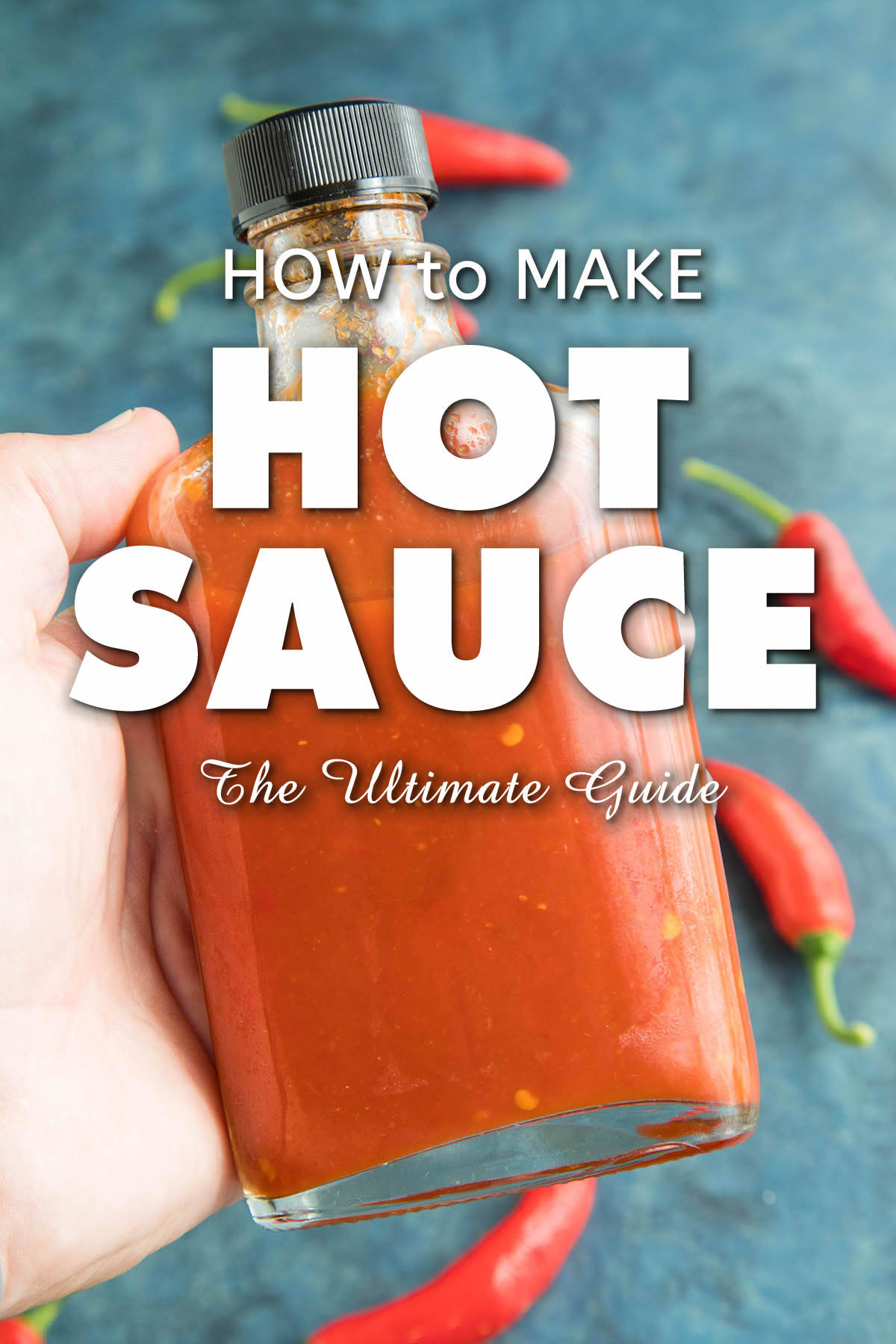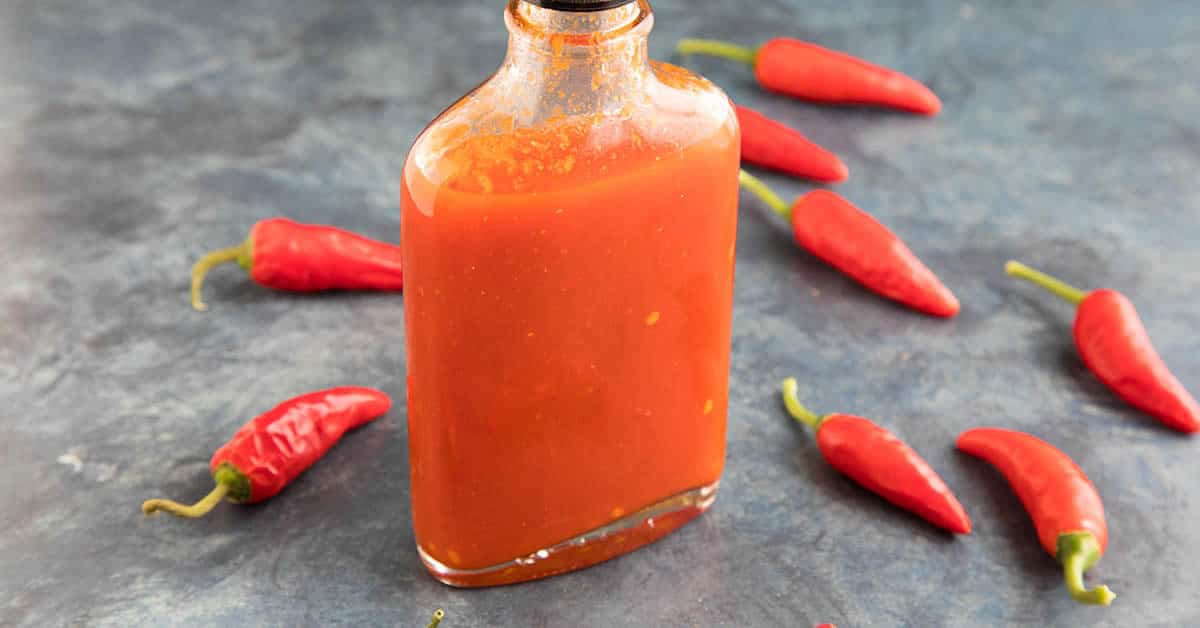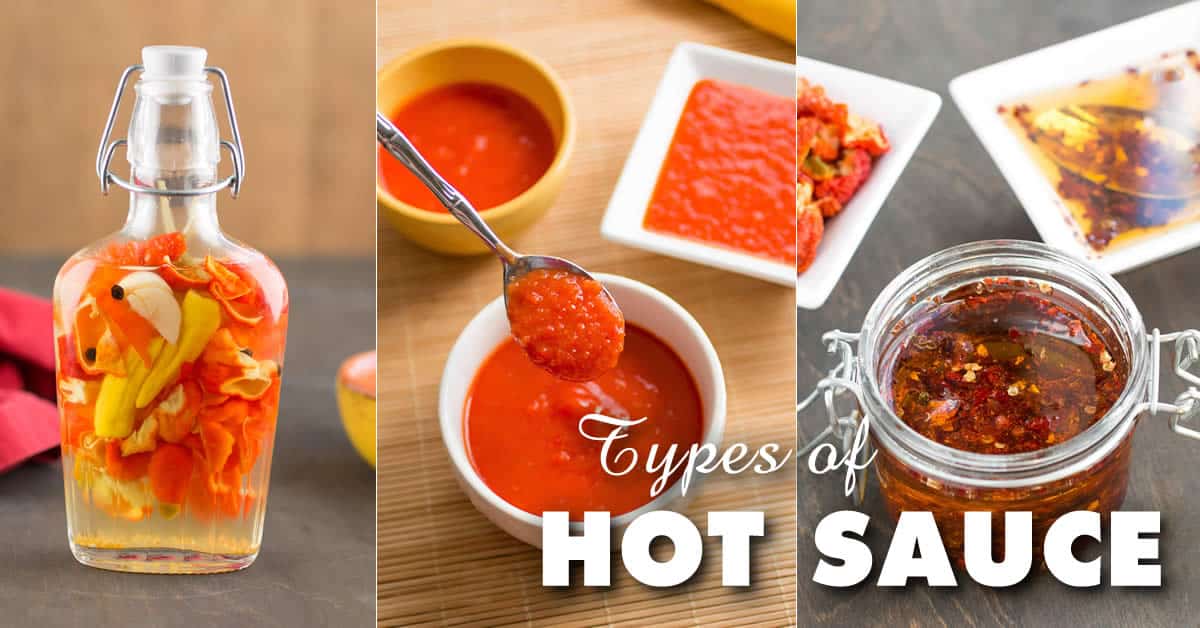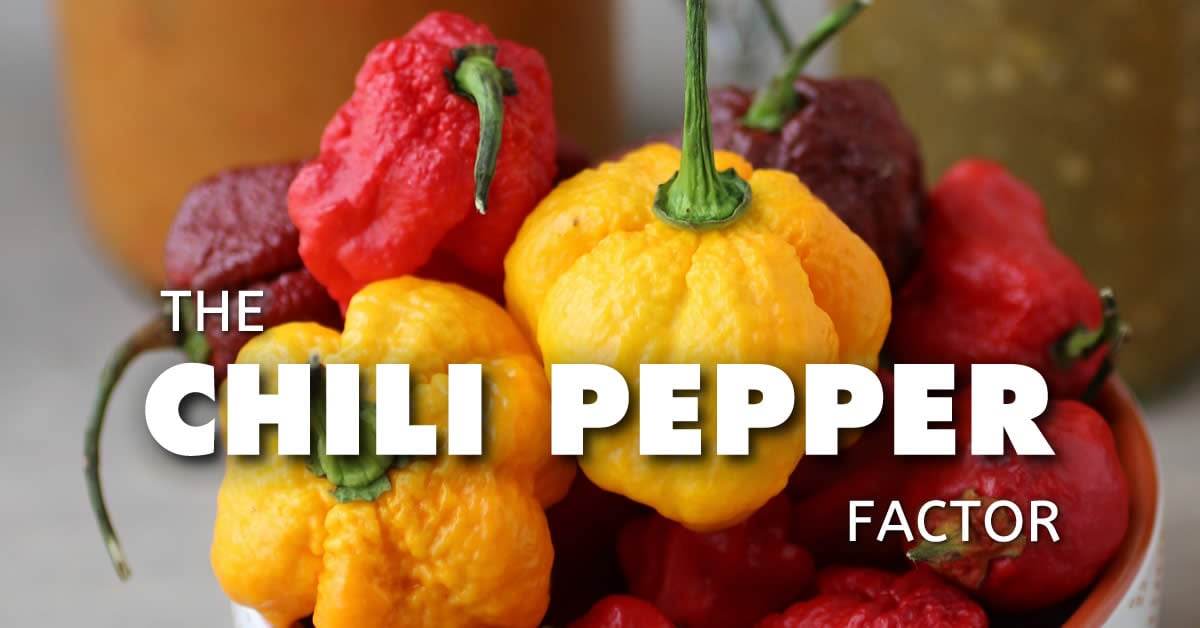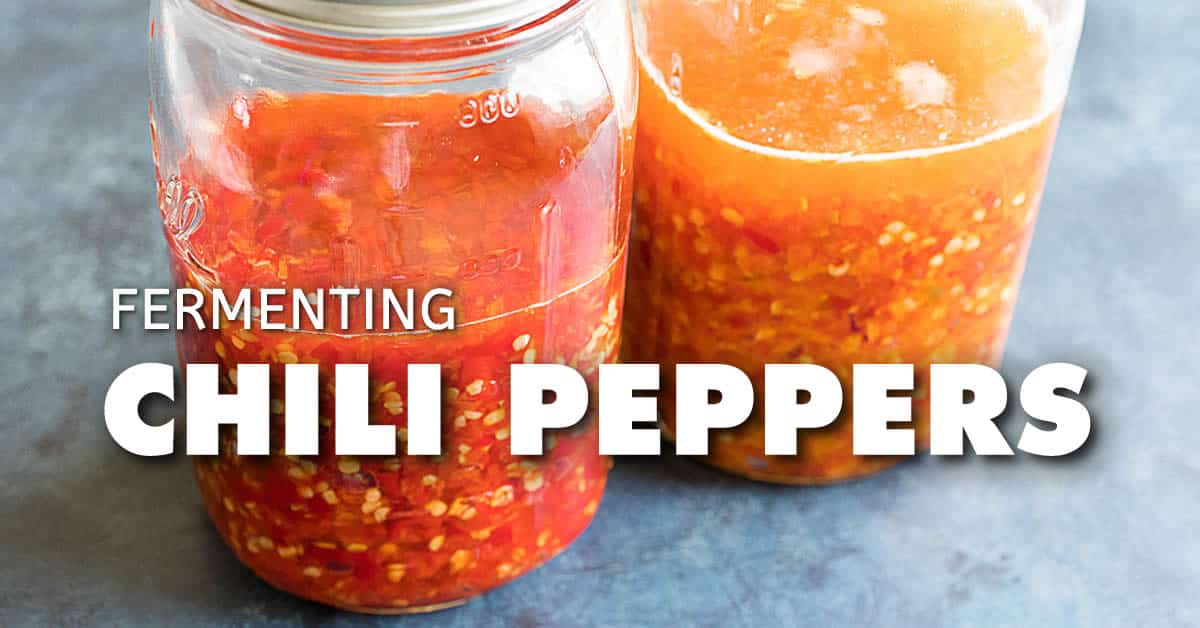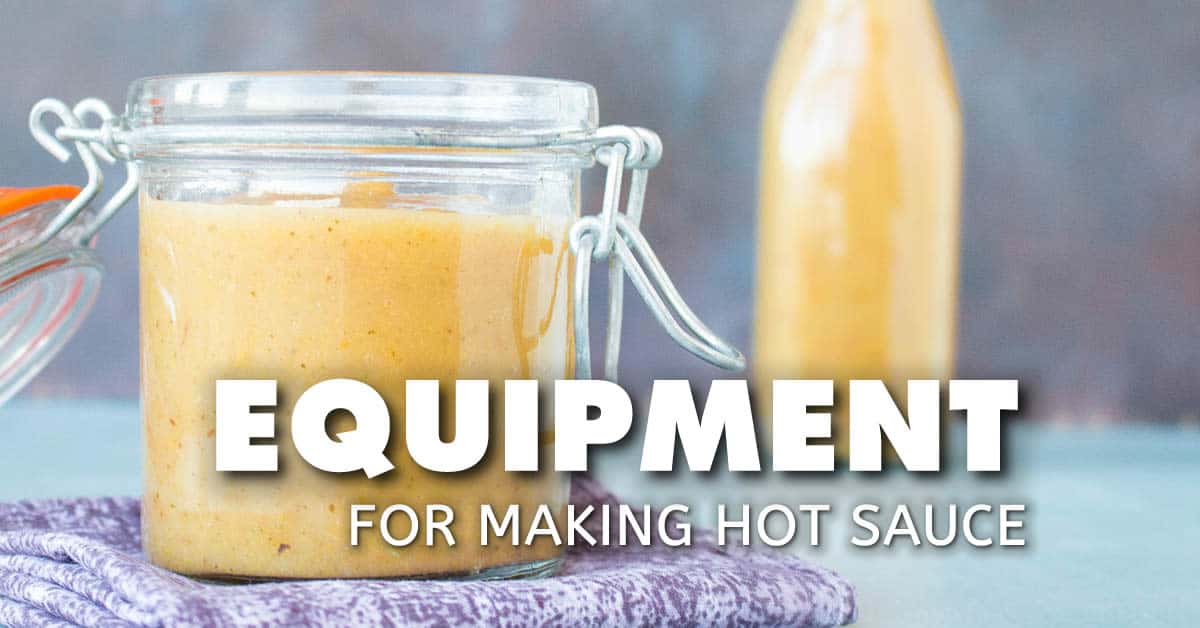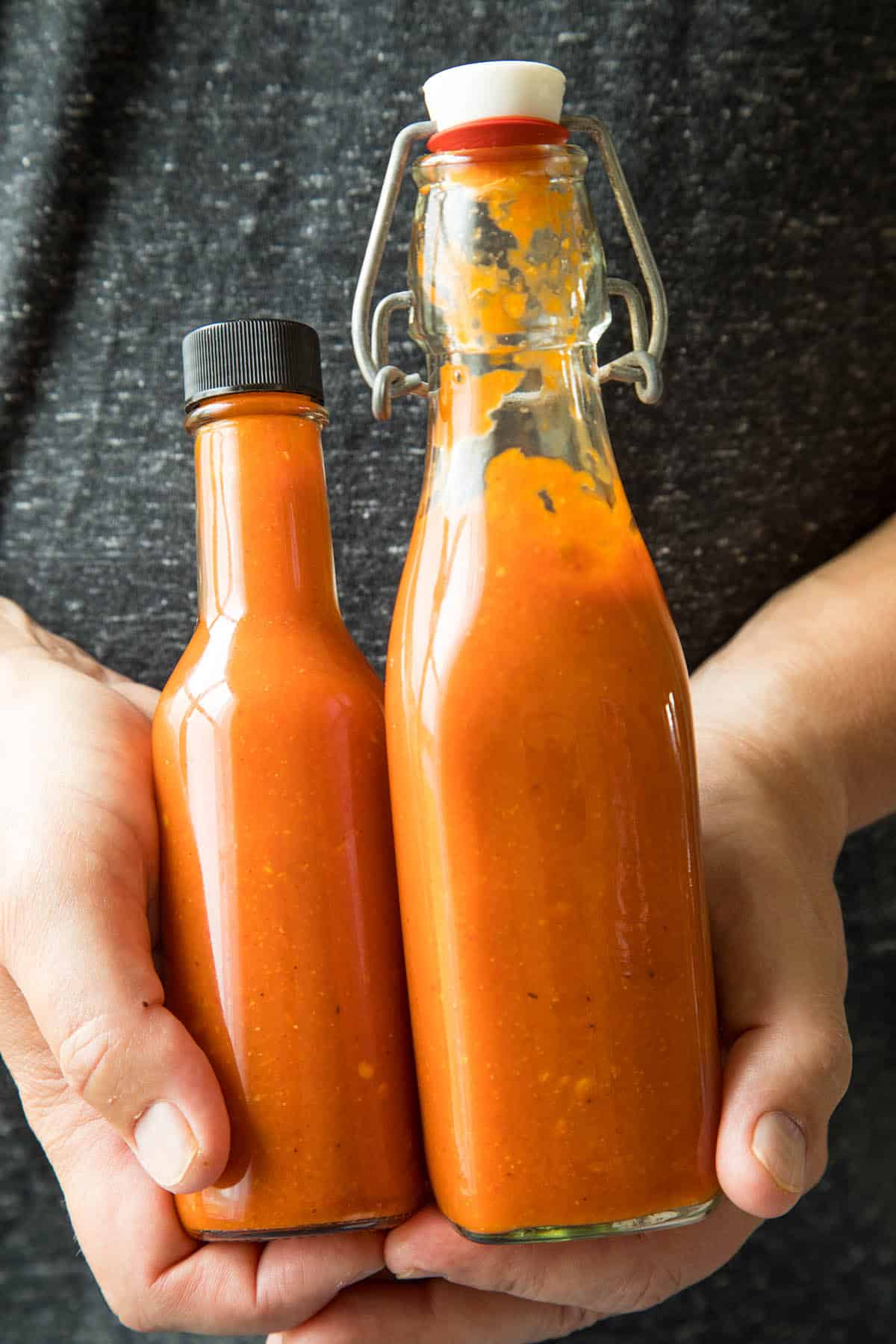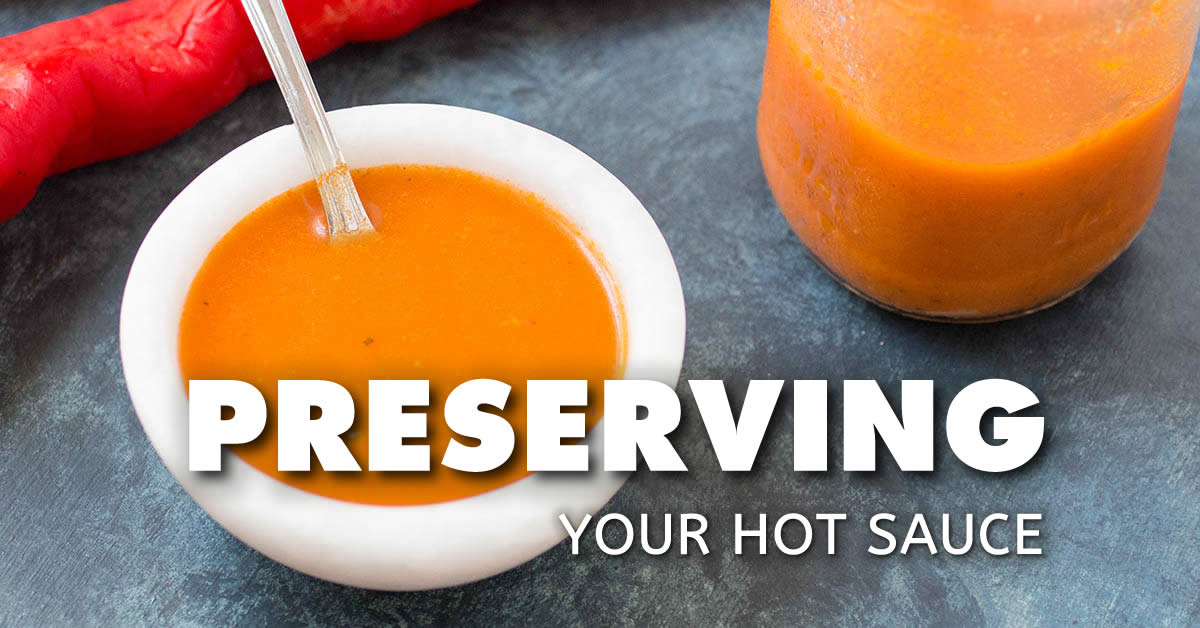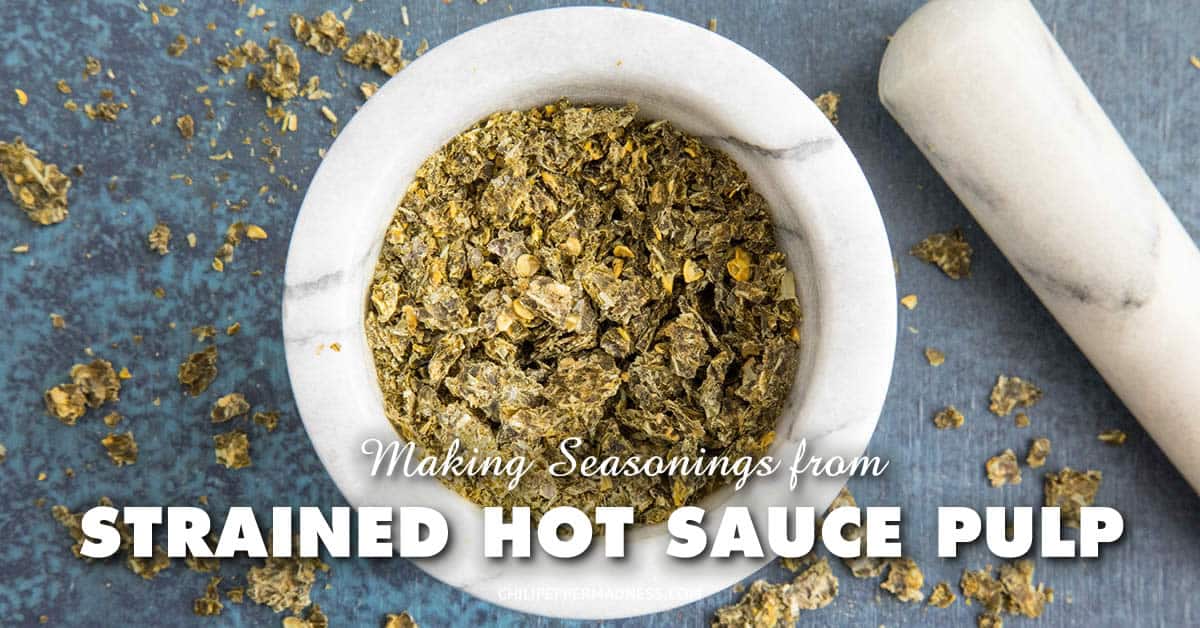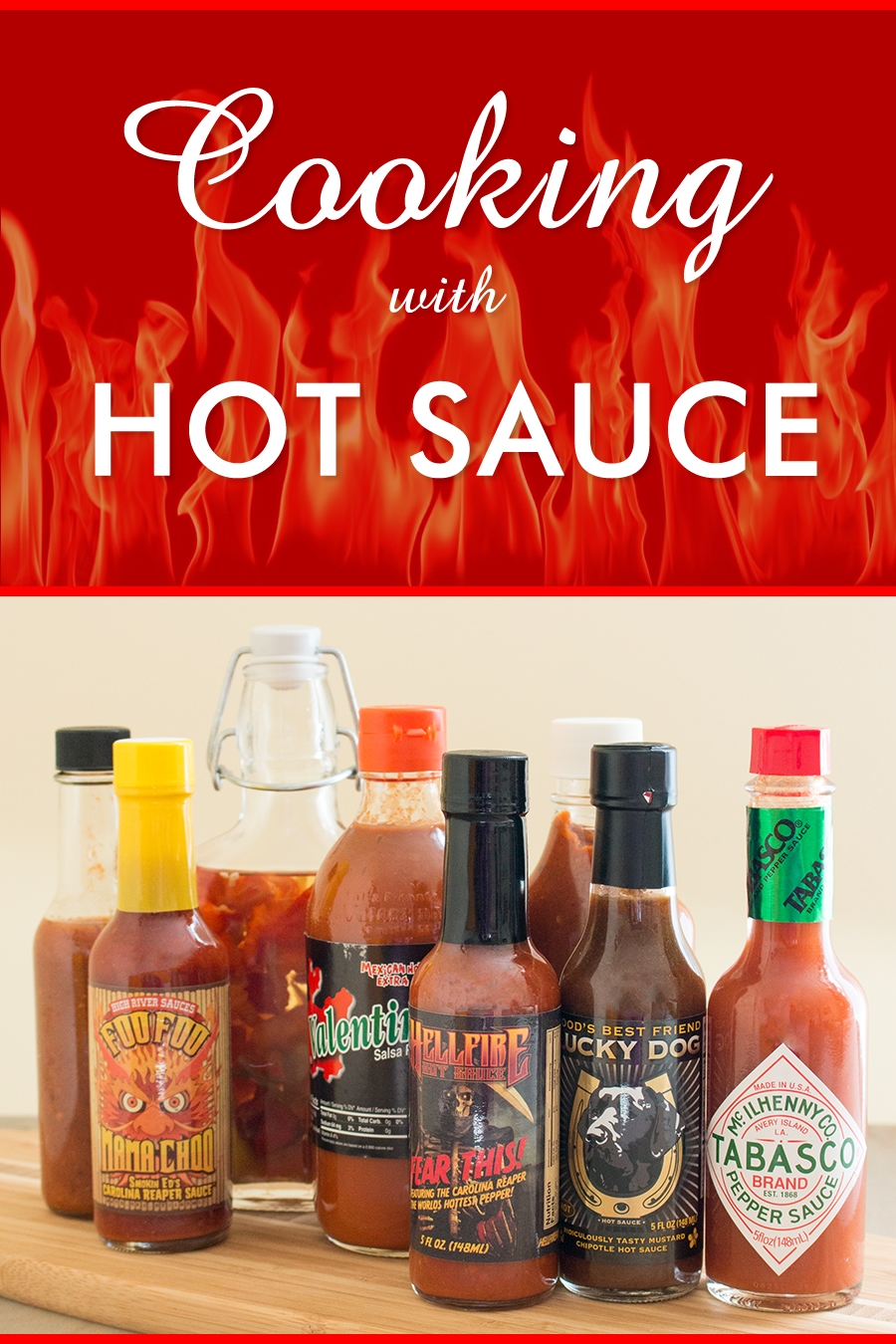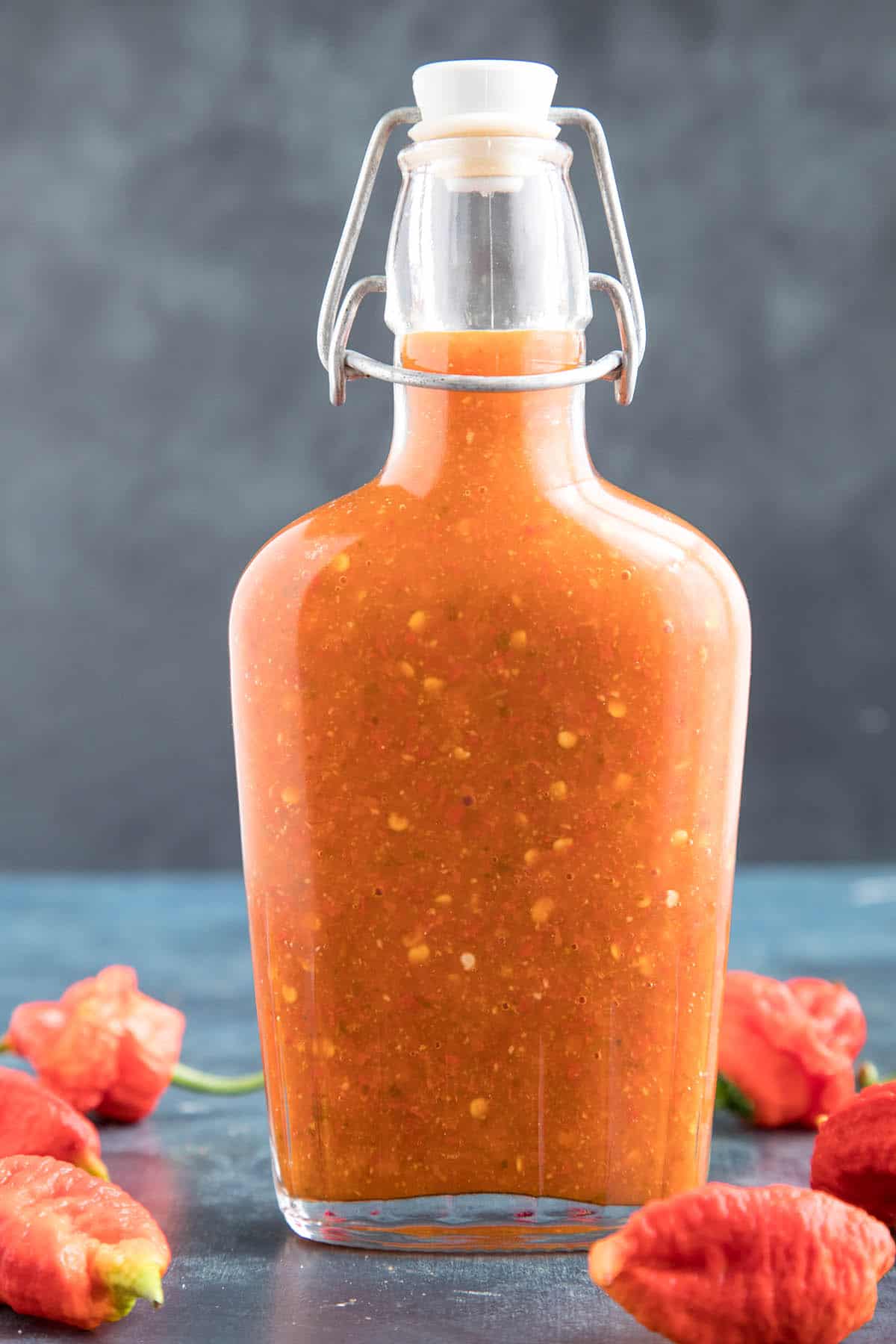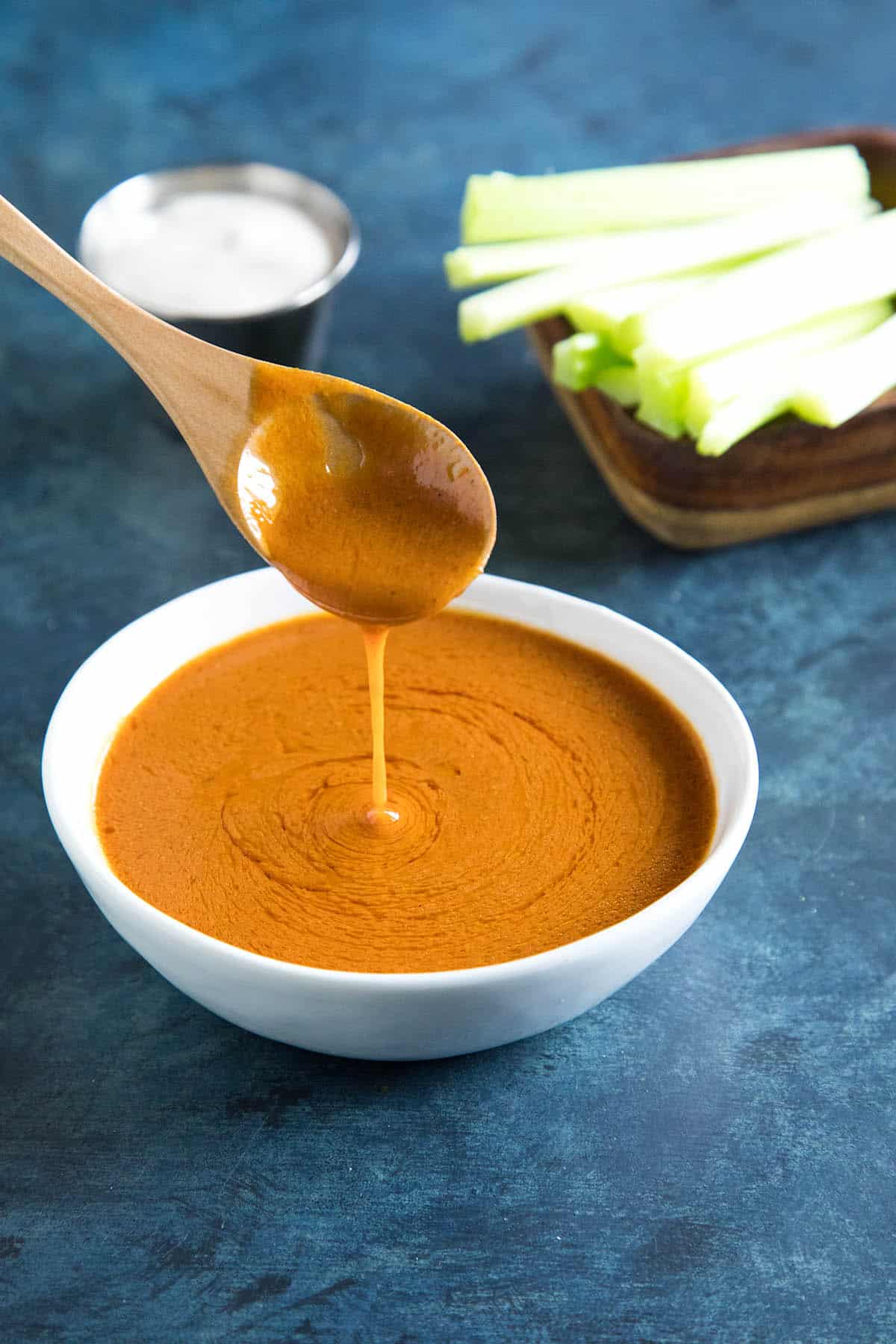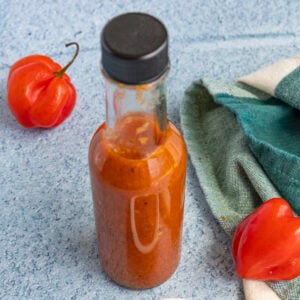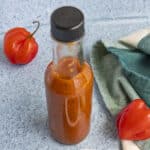Obviously you can change things up A LOT with this recipe, as discussed in the ingredients section below. You can introduce a mixture of peppers of varying flavors and heat levels, add in vegetables like tomato, onion, garlic, and/or carrots for big flavors, try fruit for sweetness, toss in interesting seasonings, and so much more. Gone are the days of a single brand or two filling the hot sauce shelves. As I run a food blog dedicated to spicy foods as well as chili peppers, I receive emails and comments all the time related to making hot sauces. People want to know how to make them at home. Some people want to learn how to take their hot sauce making hobby and turn it into a business. I have a lot of hot sauce recipes on the site here, but wanted to add to my growing recipe collection some information on how to make hot sauces in general. I will continually update this page with information as I acquire it, but for now, let’s talk about making your own hot sauces at home. It all starts with an essential ingredient – chili peppers. Chili peppers exude charisma and a mystique that is simultaneously exotic and down-home, and without them we wouldn’t have some of our favorite dishes and condiments, one in particular that is very close to my heart – HOT SAUCE. I enjoyed hot sauce as a kid, but didn’t discover the wide world of artisan hot sauces until well into my twenties. Recently married, I became interested in cooking and my appetite for spicy food was in full bloom. There is a bit of an art to making hot sauces, but it isn’t a difficult thing to do. It is mostly about combining chili peppers with other ingredients to achieve a particular flavor. The first advertisement for a commercial hot sauce in the United States seems to be in Massachusetts in 1807 by a farmer for a cayenne sauce. It was Edmund McIlhenny, a banker from New Orleans who popularized hot sauce in the American culture. He fermented Tabasco peppers and aged them, strained and mixed them with vinegar, and began to sell it to local markets. McIlhenny’s sauce became the famous “Tabasco” hot sauce that we know today. When you make your own hot sauce at home, you are free to incorporate whatever ingredients that please you. Also, you’re free to emphasize particular flavors that other sauces don’t offer, such as more superhot chili peppers or a batch that focuses heavily on fruit. In this way, making your own hot sauce guarantees it will be unique. Making hot sauce is also a great way to preserve your chili pepper harvest. I grow a good sized pepper garden each year and while I cook with and preserve them in many different ways, I have yet to find a chili pepper that can’t be made into a wonderful hot sauce. Even mild peppers can create flavorful sauces. See How to Preserve Chili Peppers for further information. There are different techniques to making hot sauces, too, but it mostly seems to be a regional variation based on regional ingredients, which you’ll see reflected in this list. Hot sauce has countless variations, such as the consistency of the peppers, the preparation of the peppers (fermented, fresh, dried, roasted, pan cooked) the actual types of peppers used in the hot sauce, the use of other ingredients and more. The most basic division with hot sauces is whether or not the peppers are blended with the other ingredients. Sometimes they are, sometimes they are not. Caribbean Style – Usually made with fiery habaneros or Scotch Bonnet peppers, these sauces vary wildly because of the diverse culinary influences in the area. You’ll find hot sauces with African influence, and others with French influence nearby, as well as Indian influence and more. The ingredients reflect this. Hawaiian Style – Hawaiian hot sauce, or “Hawaiian Chili Pepper Water”, is typically a mixture of local chili peppers, garlic, ginger, a bit of vinegar but mostly water, among other potential ingredients. It is splashed over everything. It is reminiscent of the famous “Puerto Rican Hot Sauce – Pique”. Mexican Style – You’ll notice a lot of crossover from Mexican cuisine and the American Southwest and Tex-Mex cuisine. These hot sauces are made with lots of smoked and/or dried pods as well as local ingredients. They usually focus more on flavor and less on heat. Madagascar Style – In Madagascar, the locals serve “Sakay”, which means “spicy” in Malagasy, with many of their meals. Cooks there do not commonly cook with heat, but serve it on the side as a condiment or dipper. It is made primarily with peppers, oil and vinegar, then adjusted with other ingredients to taste. Asian Style – Asia is a huge area with a numerous cultures, so it is difficult to characterize their hot sauce collectively, though many Asian hot sauces and sauces are thick and used as chili pastes or chili oils. In Thailand, Sriracha Hot Sauce is the most famous, made primarily with ground chilies, garlic, vinegar, sugar, and salt. In Korea, Gochujang is quite famous, made from chili powder and fermented glutinous rice. Middle Eastern Style – Chili peppers are popular for sauces in the Middle East with sauces such as Harissa (a flavorful chili paste), Muhammara (a hot pepper dip), Shatta (a chunky pepper sauce), and Zhug (an herb and oil based sauce with peppers), with flavors of Middle Eastern spices. African – the most famous African hot sauce is Peri Peri Sauce, which is made from African Bird’s Eye chili peppers. It is thick and flavorful with a nice level of heat. European Style – I’ve encountered Hungarian Hot Paprika as well as Ajvar (pronounced “eye-var” – smoky roasted red peppers with sometimes eggplant), which is a Balkan sauce. It is more like a spread. There is a very hot version, call Lutenica (aka “Ljutenica” - “Luto” means “hot”), made with peppers, carrots, garlic, oil, sugar, salt, tomatoes, and sometimes eggplant, though interpretations exist from region to region. There is also Hungarian “Eros Pista” (Strong Steve), made primarily of minced paprika peppers and salt. Spain cooks with a lot of peppers and some of their hot sauces include Samfaina (like a French ratatouille), Sofrito (peppers with tomato, garlic, onions and oil) and Mojos (herb and oil based with peppers, sometimes). Italy does have hot sauces, such as the famous Diavolo sauce, made with spicy chili flakes or peppers. Again, this is not an exhaustive list, as I could include different types of sauces, chili oils and more, so for the curious minded, I suggest following the peppers into other parts of the world and discover what the locals are cooking. You’ll without a doubt discover some very interesting hot sauces made with local ingredients. Will it be great? Maybe. Could it be better? Of course. When you incorporate other ingredients, you begin to develop a flavor profile, and one sauce may work for one particular dish over another. It is the combination of those ingredients that makes hot sauce making fun and interesting.
Chili peppers Vinegar Citrus juice – lemon, lime, orange, grapefruit, pineapple, etc. Fruit Vegetables Seasonings Salt
Think anywhere from jalapenos to serranos to cayenne peppers to Thai peppers, habanero peppers, superhot peppers like 7 Pots, scorpions, the Carolina Reaper and so much more. Learn much more about how to make hot sauce from dried peppers here and how to make hot sauce from chili powders here. A hot sauce made with lemon juice will taste substantially different from a hot sauce made with orange juice. Citrus fruit is very commonly used, as is pineapple and mango, though I have experimented with hot sauces made from kiwi, papaya, coconut and more. Salt is ubiquitous. It belongs to the seasoning category, but salt is unique in that it also acts as a preservative for your hot sauce, along with vinegar and citrus. With all of these ingredients, you have a near infinity of options for making a unique hot sauce. If you’ve ever enjoyed Tabasco sauce, you’ve tasted fermented chili peppers. Tabasco starts with tabasco peppers which they crush, mix with salt, and ferment in oak barrels for up to 3 years. The original Tabasco sauce only uses 3 ingredients – tabasco peppers, salt, and distilled vinegar. A number of hot sauce makers use fermented peppers in the form of pepper mash to make their products, and a good pepper mash makes a difference in the resulting flavors. Learn more about How to Ferment Chili Peppers Here or try this Fermented Hot Sauce Recipe. A big question I often receive from would-be hot sauce makers is – I’ve made hot sauces using both techniques and I do not have a preference. Fresh chili peppers offer a big range of flavors and heat. Fermented peppers are mellower and often have more depth of flavor in comparison, but I wouldn’t say better flavor. Just different, more nuanced in a way. Either way, I encourage you to try fermenting chili peppers and making hot sauces from the resulting mash. Then, decide for yourself if it is worth it to you. Fermentation does take some time, usually a couple weeks minimum, for the peppers to properly break down, though you can easily go longer. I often ferment my peppers for 6 months at a time for making hot sauce the next spring after my last harvest. See my
A good nonreactive pot for cooking the sauce Food processor or blender Glass jars or bottles Strainer Kitchen scale, for measuring peppers and other ingredients PH strips or PH meter (affiliate link, my friends)– this is useful for checking the final acidity of your hot sauce Latex gloves for handling hot peppers
Need help? How to Stop the Chili Pepper Burn On Your Skin. Also, the fumes from the chili peppers and/or the fine powders may get into the air if you are not working in a well ventilated room, so you may want to wear a mask and goggles. Superhot chili peppers, truly, are called superhots for a reason. Ingredients
1 pound fresh chili peppers of choice ½ - 1 cup vinegar 1/2-1 tablespoon salt
Cooking Directions Wash the peppers and remove the stems. Remove the seeds, if desired. Add them to a food processor along with the vinegar and salt and process until smooth. Add the mixture to a pot and bring to a quick boil. Reduce the heat and simmer for 15 minutes to allow the flavors to develop. Remove from heat and cool. Add them to serving bottles, or strain out the pulp first for a much thinner sauce and bottle. Makes about 2 cups or so of hot sauce. Thank you, my friends, readers, and spicy food lovers. If you have any questions or comments, contact me any time or leave a comment below. I will be adding more information here as I acquire it. Good luck making your hot sauce! – Mike H.
Aji Chili Sauce Ancho-Jalapeno Hot Sauce Caribbean Jerk-Peach Hot Sauce Caribbean Style Mango-Habanero Hot Sauce Carolina Reaper Hot Sauce Chermoula Chimichurri Chimchurri Rojo Cuban Mojo Datil Pepper Sauce Devil’s Tongue Hot Sauce Fermented Aji-Garlic Hot Sauce Ghost Pepper Hot Sauce Habanero Hot Sauce Hawaiian Chili Water Homemade Buffalo Sauce Homemade Cayenne Pepper Sauce Homemade Chili-Garlic Sauce (like Asian Huy Fong chili-garlic sauce) Homemade Fire Cider Homemade Harissa Homemade Tabasco Sauce Homemade Sriracha (both fermented and non-fermented varieties) Honey Roasted Hot Pepper Hot Sauce How to Make Louisiana Style Hot Sauce Jamaican Scotch Bonnet Pepper Sauce Peach-Scotch Bonnet Hot Sauce Peri Peri Sauce Puerto Rican Pique Roasted Red Hatch Chile Sauce Roasted Red Jalapeno Hot Sauce Salsa Roja Salsa Verde Spicy Serrano Hot Sauce Sweet Pepper Chili Sauce Ti-Malice - Hatian Creole Hot Sauce Sambal Oelek Scotch Bonnet Curry Hot Sauce Southwest Creamy Jalapeno Sauce Superhot Hot Sauce (The Hottest Damn Hot Sauce I Ever Made)
I will keep adding to this last as I make the sauces. There are so many! I love it. The answer it all about the PH level of the hot sauce. It should keep a few months easily in the fridge, or even longer. It’s all about the acidity. To be technical, target level ph for shelf stable foods is below 4.6 ph, but should probably be lower for home cooks, around 4.0 or so, to account for errors. Many home hot sauce makers prefer 3.5 or lower. If you’re concerned, add more vinegar to lower the ph. Sauces made with fermented chili peppers will last even longer. And yes, you can process your hot sauce either in a hot water bath or with a pressure canner. Just be sure to use proper canning/jarring safety procedures. Do not throw that pulp away! It is a rich collection of flavorful ingredients and there is plenty of life left in it. You can dehydrate it to make a homemade seasoning blend. Isn’t that awesome? Essentially, spread the pulp out over dehydrator sheets and dehydrate it for 8-10 hours at 125 degrees F, or until it is completely dried through. Grind it up with a grinder or a mortar and pestle and save it in airtight containers. Use it as you would any seasoning blend. Learn more at this page – Making Seasoning Blends from Strained Hot Sauce Pulp. Learn more at this page – Cooking with Hot Sauce.
Where’d you get those sauce bottles?
Also, don’t strain the sauce. Straining the pulp from your hot sauce will significantly thin it out. However, if you’ve already made your hot sauce, strained it, and want to thicken it up, one way to do so is to simmer it over low heat. The heat will reduce the water content and it will thicken. You can also incorporate a thickener, such corn starch, arrowroot, or xanthan gum by mixing a tablespoon or more with water, then swirling into the simmering hot sauce. This can affect the flavor, however, so be prepared. This is a classic way to thicken gravies. I like to keep several good hot pepper powders, like 7 Pot Power or Caroline Reaper Powder on hand to swirl into my sauces and foods to really spice things up. Incorporate carrots or tomatoes, then combine the two sauces for a milder overall sauce. Adding sweetness can help, too. Try honey, agave nectar, or a bit of sugar or brown sugar, if those flavors fit the hot sauce. You’ll still get plenty of heat, but the sweetness helps to balance some of it. Dairy is another way to combat the heat. Of course this will completely change the character of your hot sauce, but consider adding cream to help. Check out my Homemade Buffalo Sauce Recipe here. If you’ve reached this level, here are some steps and advice to consider when bringing your product to market. Get a lot of feedback, not only on the taste, but the color, heat level, smell and more. Take notes and listen. Your product is the most important thing. Born to Hula’s “Reaper of Sorrow” would get a different reaction if they had named it “Rectum Destroyer”. What about labels? A professionally designed label will be perceived as more professional than a cheap label printed at home and slapped on a bottle. Hot sauce makers are some of the friendliest people I’ve ever met, and their passion for their products exudes. You’re guaranteed to meet someone happy to tell you their story and how they got into the business. You can’t make large batch hot sauce out of your home kitchen and meet all FDA requirements, so research commercial kitchens in your area. You can often rent them by the day. For a fee, they will not only source the ingredients and make the sauce, but will bottle it and ship it to you with labels and all. Consider your costs on such a service, but it can be a huge time saver. Here is a good resource with links to Commercial Kitchens/Co-Packers, Federal Agencies, other Process Authorities, Nutritional Analysis, and Trade Groups to help get you started: https://cals.cornell.edu/occupational-environmental-health-program/pesticides/policies-certification-and-regulations “The advice I would give to would be sauce makers wanting to start a new business is this: Do your research. Initially do your research on food safety and take a food safety course and read pertinent information from both the FDA and local DOH. After that, decide if you want to manufacture yourself or co-pack. Again, research. Starting up is an investment and the more you know before you start shelling out money the less you waste making mistakes. Finally ask questions. There’s tons of sauce makers that have been where you are and will be more than happy to answer questions, just don’t expect them to to do your work for you. Finally test your sauces on people who will give you honest feedback. Friends and family will be biased for the most part. Honest feedback may save you from spending a lot of time and money on a sauce nobody wants. Be smart before you start.” – Jeremy Walsh, Bigfat’s Hot Sauce (www.bigfatshotsauce.com). “On the light side I would say to remember all the people that said, ‘This is great-you should get it in stores’, and remind them of that when you need financing!” - Bill White, Slap You Silly Hot Sauce (www.slapyousilly.net)

